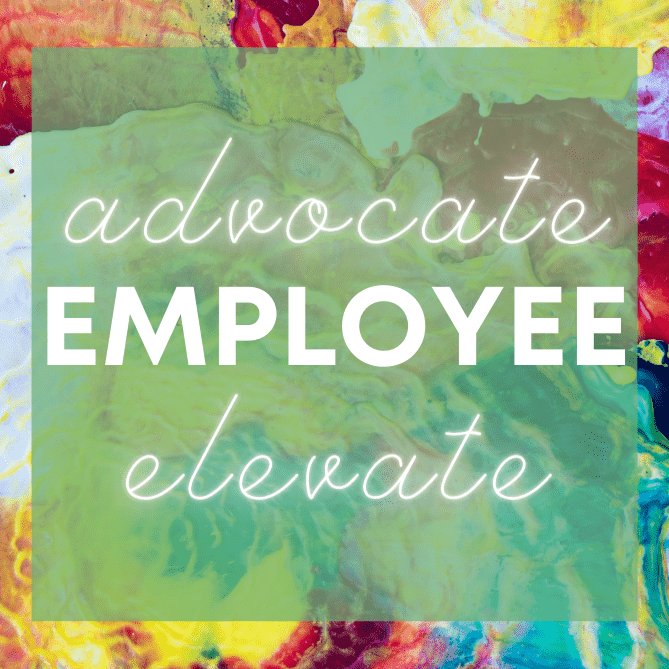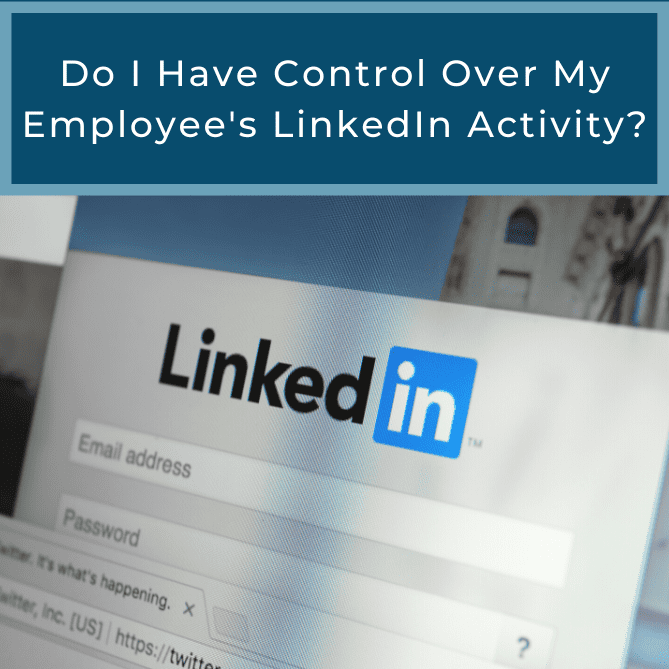Over the last three months, we’ve covered mindset, LinkedIn profile updates and buildouts, relevance, and the importance of your employee’s networks. Each topic is essential and often overlooked by leadership, marketing, and recruiting teams.
While focusing on the individual, LinkedIn also provides a collective view of the organization. For small to mid-sized businesses and nonprofits, that means a chance to create a well-branded, thoughtful, and strategic presence.
Before we jump into to five ways employers can encourage their team to stand out, let’s consider five mistakes I often see within companies:
1. Leadership still thinks LinkedIn is social media and irrelevant to them and their team. I received this message when I followed up after a recent virtual workshop. Sometimes you just need to have an expert to illustrate. A reasonable percentage of those attending training, of any kind, isn’t looking forward to being there. I’m always interested in hearing the one takeaway they have, and it’s often the people who didn’t want to be there who seek out additional coaching or training.
“I must admit I wasn’t very excited for a LinkedIn training but I admit it was fantastic. I realize now how much I was losing out on and how much I underestimated the value. I will be sharing this with our leadership and my team.”
Sales Leader, Telecommunications Industry.
2. Their teams, especially sales, fall back on having strong relationships with their client/customers and don’t see the value of their digital presence.
3. There is a lack of creative cross-training between younger business development/salespeople and their experienced colleagues. While the young professionals know the buttons to push and how to leverage LinkedIn, they don’t have the institutional industry knowledge and long-term relationships.
4. There is pressure and desire to automate marketing and sales activity to the detriment of the recipient’s experience. There isn’t a CEO or business owner I talk to that says they look forward to automated, cold messages and connection requests, and yet, they want their marketing and sales teams to employ such methods.
5. I still see companies not investing in actual content that informs, educates, and inspires credibility.
Marketers are creating content at dizzying speed; more, more, more. The content delivered via podcasts, video, blogs, live streaming, events, and case studies is distributed on various platforms hoping it will be shared and gain traction. One of the biggest problems for everyone is that once we post said piece of content, everyone is on to the next post. Little attention is paid to previous content and posts. Unless, of course, you’re the person who is responsible for ensuring the content doesn’t have broken links, is still current, and that all comments have received a response.
Let’s dive into the five ways employers can encourage and promote their employees’ personal brands to create employee advocacy.
1. Invest in your employees’ LinkedIn profiles to showcase their experience, career highlights, current responsibilities, role, and value to your organization. You recognize that each person represents your brand and in a remote, digital world— showing up to stand out is business-critical.
2. Don’t stop with their profiles. Provide them with training and coaching to know how to best use LinkedIn for their particular role. The leadership team, recruiters, business development, and sales need to be LinkedIn confident, efficient, and effective.
3. Respect and trust that your employees use LinkedIn sensibly and in your best interests. In a recent podcast interview with Heidi Nathanielsz, Executive Director, EO, Capital District New York, we discussed deciding to use her profile for EO and less for her as an individual. Having worked with hundreds of companies and countless individuals, I can confidently say I have not heard of employees who have gone rogue on LinkedIn. I’m not saying it doesn’t happen. And you should head it off by adding specific language to your employee handbook and onboarding process on the expectations on LinkedIn. Then, remind your teams from time to time. Paranoia about what employees are doing on LinkedIn would be better served if invested in more training and better communication.
4. Shift your content from the company to specific people in the organization. The key to this is that they have the byline. People trust people more than they trust brands or companies. Let the subject matter experts in your company or nonprofit get the credit and share their point of view, knowledge, and insight. This addition helps their LinkedIn profile. Featuring content that they create on their LinkedIn profile takes them from credible to expert. It’s also a perk that costs you nothing. It saves you money and delivers more in-depth, valued content.
5. Give your employees inspired, exciting content that they can share. Think differently about your content and how you can move beyond promoting your products and services. Ahead of a workshop for a group of industry-specific marketers in one geographic region, I noticed that they all had the same content on their company Pages. None of them stood out. None had ever looked at what others were creating and sharing in their industry. For every four posts, only ONE should be promotional. Your employees – your best advocates, are more likely to comment, share and send your content if it’s interesting, valuable, and not always self-serving.
In general, businesses and their marketing departments overlook the power of the individuals in their organizations and make their job harder than it already is. It’s the rare CEO or CMO who says, “Let’s make sure everyone looks great on LinkedIn, let’s make sure everyone knows how to nurture and expand their networks, and, finally, let’s make sure everyone is comfortable and confident engaging on LinkedIn.”
A CEO who leads one of the fastest-growing franchise brands told me on a call before our training that she absolutely wants her leadership team to elevate their presence even as it may mean they receive even more recruiting messages. When I mentioned how unusual this stance was, she replied that it was her responsibility as CEO to make sure her team represented the brand correctly and help them also build their personal brand and become more marketable.
I find this refreshing, and it speaks to the culture she is shepherding, her confidence as a leader, and her understanding of how the digital world works. It is clearly a recruiting attraction and retention strategy. I respect this mindset and watched the energy in the room throughout our workshop. Her leaders were engaged, laughing, working, taking it all in, and discussing how the information and insight I provided would support and help them in their respective roles.
Learning about a company, its leadership, and its culture is pretty easy these days. I can tell a lot from LinkedIn. In less than five minutes, usually about three minutes, I understand more from LinkedIn than I do from their website, even with an executive bio, an Our Story, and the core values page. Why? Those web pages are highly curated, containing corporate messaging. Their LinkedIn company Page showcases the real company – all the people and how they explain themselves and the organization. It’s the authentic look at the company – blemishes and all.
BONUS TIP for business development and sales teams. Rethink your messaging. When I receive an unsolicited connection request, InMail, email, voice mail, or text from someone who wants to know more about me and our business because they want to initiate a sales call, I am underwhelmed, and 99% of the time, do not connect. I do sometimes respond and say that I am not in the market for said service or product. Asking for a conversation to learn more about me and our company is dated. It shows a lack of initiative and preparation. We advise all of our clients to make sure their messaging is actually messaging that they would respond to because it adds value to the conversation.
If a company claims its greatest differentiator is its people, it’s easy to see if they live that out. Just go online and see how they showcase their people or let their people showcase themselves. Companies of all sizes can drive greater benefit by showing up well, partnering with those they know who have carefully considered their brand, and by building strategic networks. Every business should strive to showcase their employees who are the subject matter experts. LinkedIn is where you should begin.





